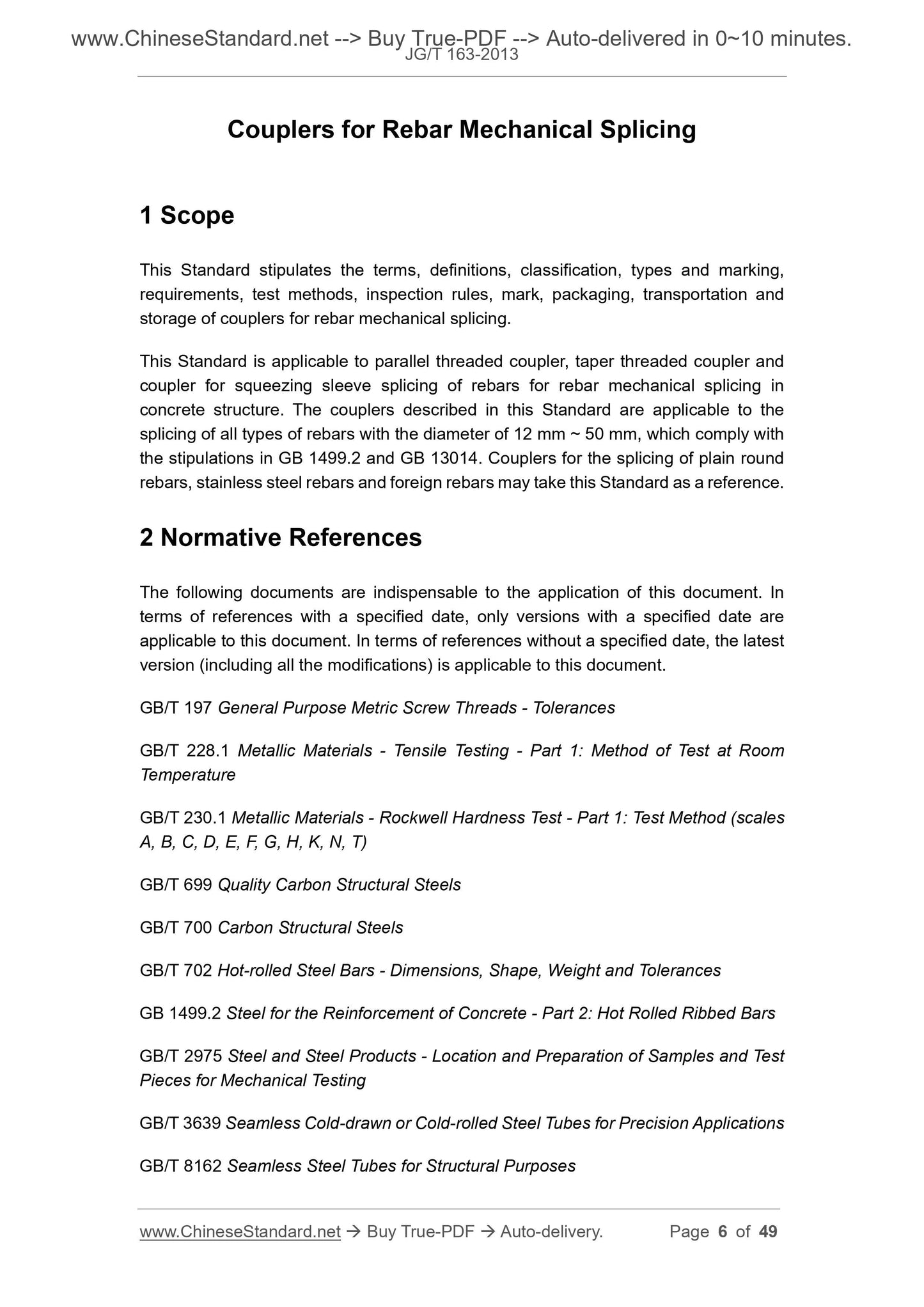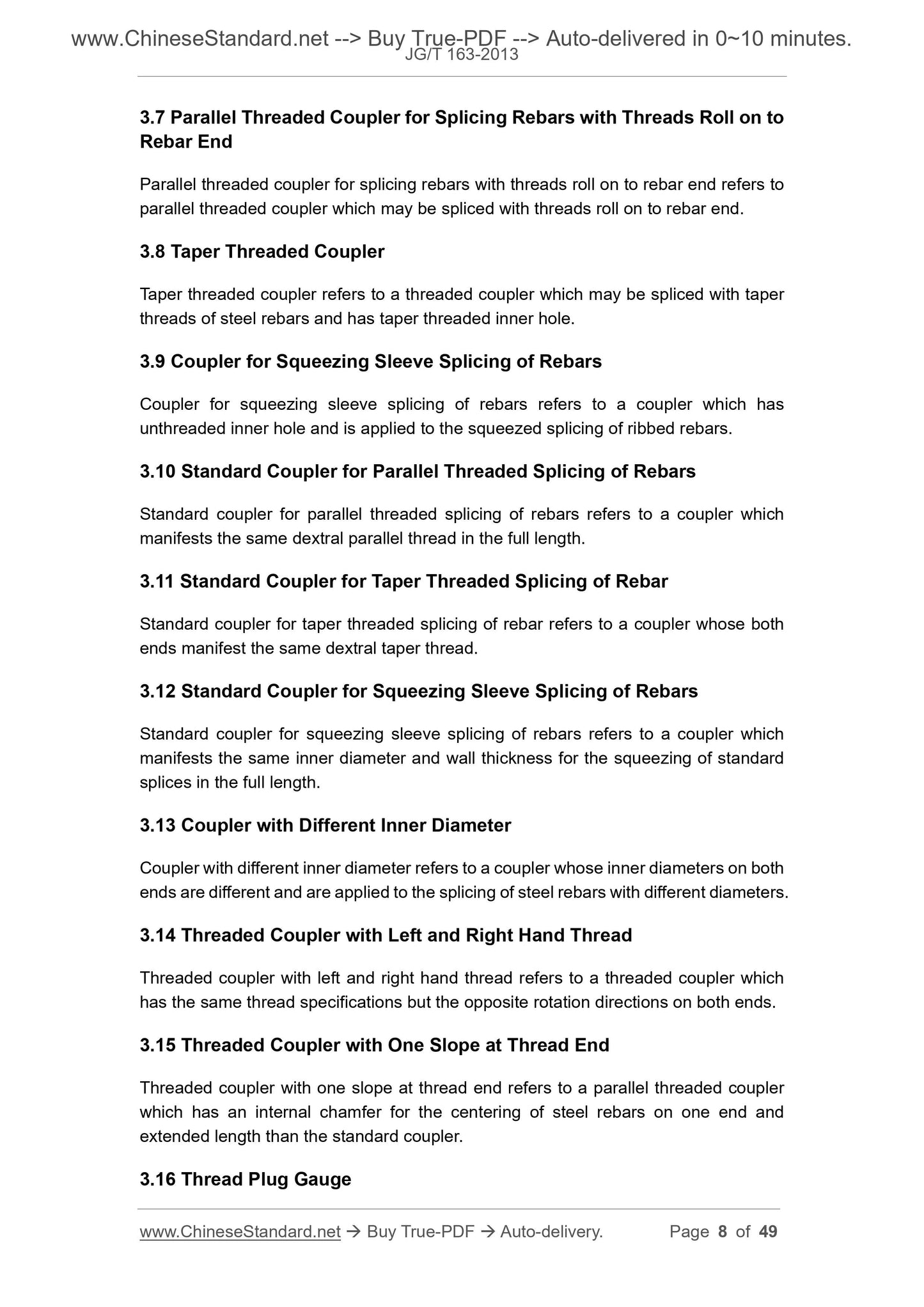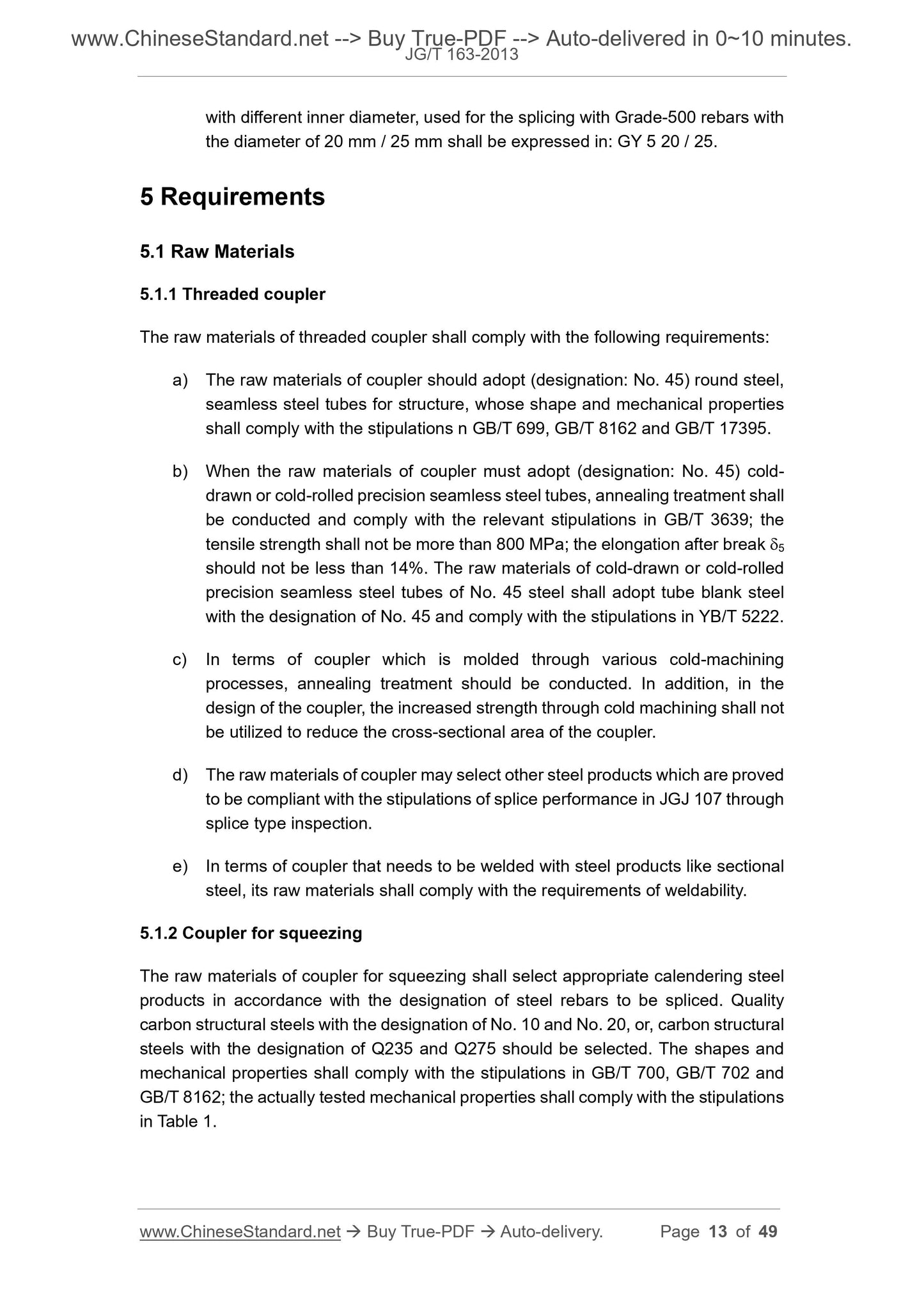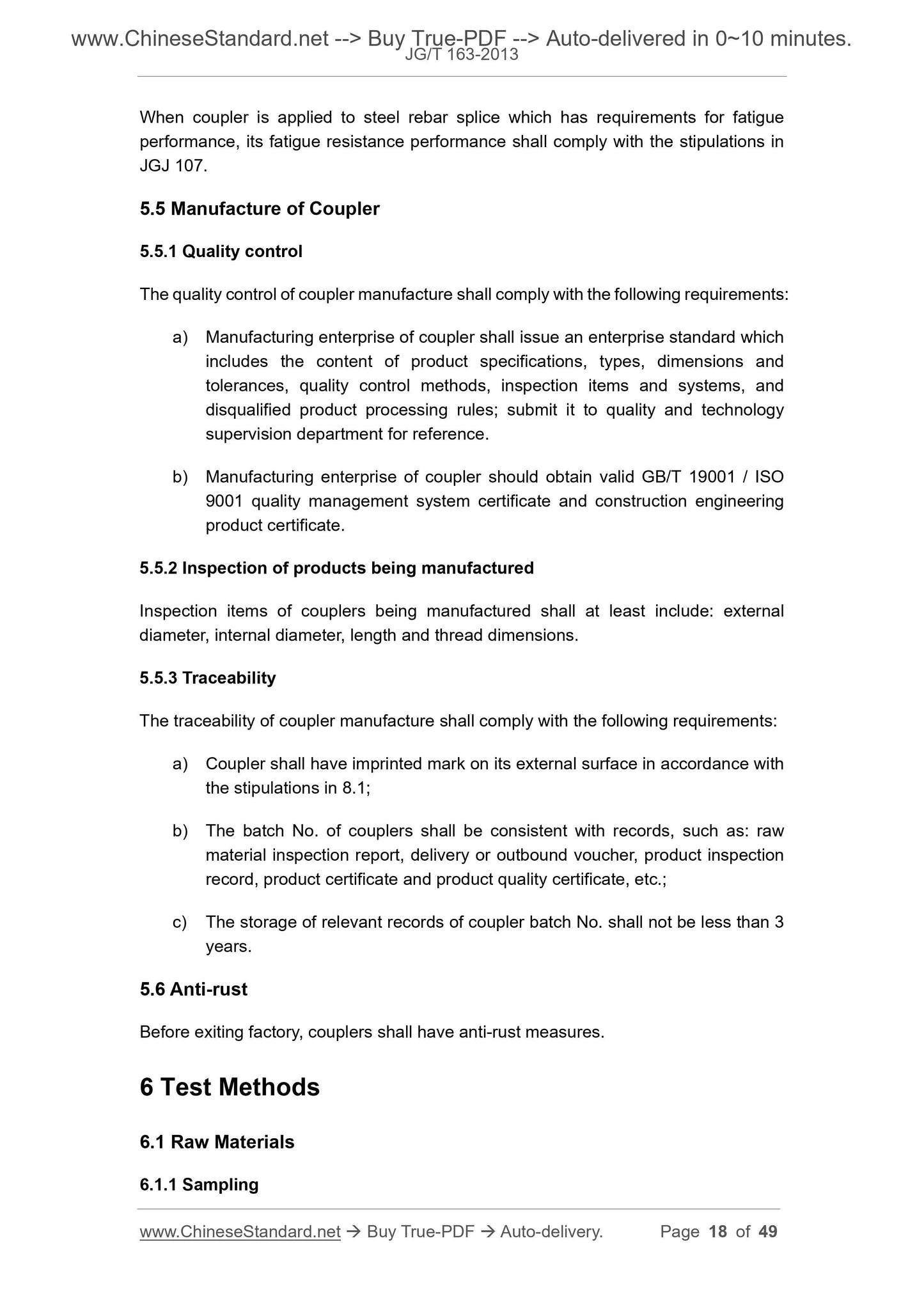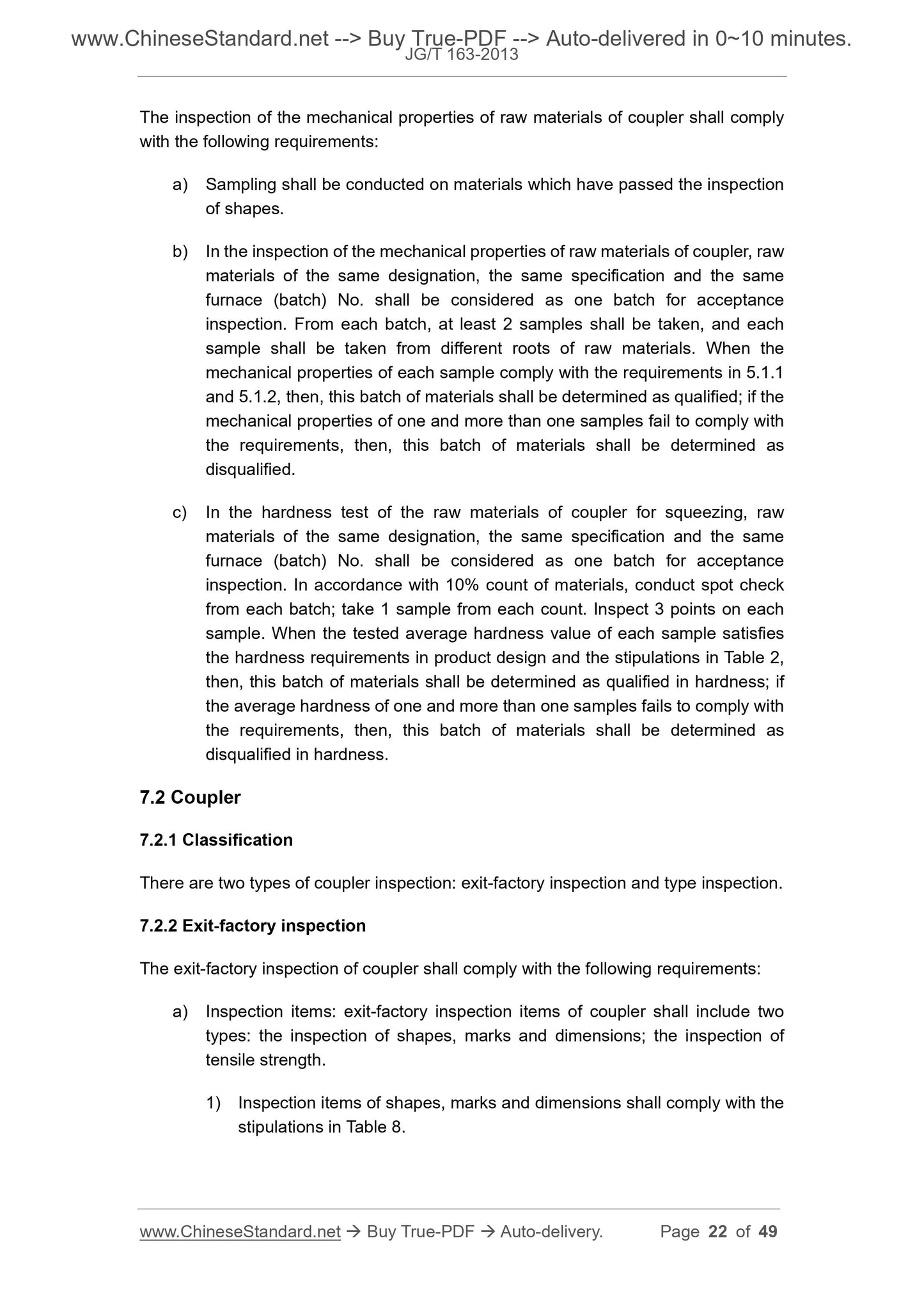1
/
of
7
www.ChineseStandard.us -- Field Test Asia Pte. Ltd.
JG/T 163-2013 English PDF (JG/T163-2013)
JG/T 163-2013 English PDF (JG/T163-2013)
Regular price
$305.00
Regular price
Sale price
$305.00
Unit price
/
per
Shipping calculated at checkout.
Couldn't load pickup availability
JG/T 163-2013: Couplers for Rebar Mechanical Splicing
Delivery: 9 seconds. Download (and Email) true-PDF + Invoice.Get Quotation: Click JG/T 163-2013 (Self-service in 1-minute)
Newer / historical versions: JG/T 163-2013
Preview True-PDF
Scope
This Standard stipulates the terms, definitions, classification, types and marking,requirements, test methods, inspection rules, mark, packaging, transportation and
storage of couplers for rebar mechanical splicing.
This Standard is applicable to parallel threaded coupler, taper threaded coupler and
coupler for squeezing sleeve splicing of rebars for rebar mechanical splicing in
concrete structure. The couplers described in this Standard are applicable to the
splicing of all types of rebars with the diameter of 12 mm ~ 50 mm, which comply with
the stipulations in GB 1499.2 and GB 13014.Couplers for the splicing of plain round
rebars, stainless steel rebars and foreign rebars may take this Standard as a reference.
Basic Data
| Standard ID | JG/T 163-2013 (JG/T163-2013) |
| Description (Translated English) | Couplers for Rebar Mechanical Splicing |
| Sector / Industry | Building and Construction Industry Standard (Recommended) |
| Classification of Chinese Standard | P25 |
| Classification of International Standard | 93.020 |
| Word Count Estimation | 31,332 |
| Older Standard (superseded by this standard) | JG 163-2004; JG 171-2005 |
| Quoted Standard | GB/T 197; GB/T 228.1; GB/T 230.1; GB/T 699; GB/T 700; GB/T 702; GB 1499.2; GB/T 2975; GB/T 3639; GB/T 8162; GB/T 9174; GB 13014; GB/T 17395; JGJ 107; YB/T 5222; |
| Regulation (derived from) | Department of Housing and Urban-Rural Development Bulletin No. 16; industry standard filing Notice 2013 No. 7 (No. 163 overall) |
| Issuing agency(ies) | Ministry of Housing and Urban-Rural Development of the People's Republic of China |
| Summary | This standard specifies: reinforced mechanical connection sleeve Terminology and definitions, classification, type and marking requirements, test methods, inspection rules, marking, packaging, transportation and storage. This standard applies to: reinforc |
Share
